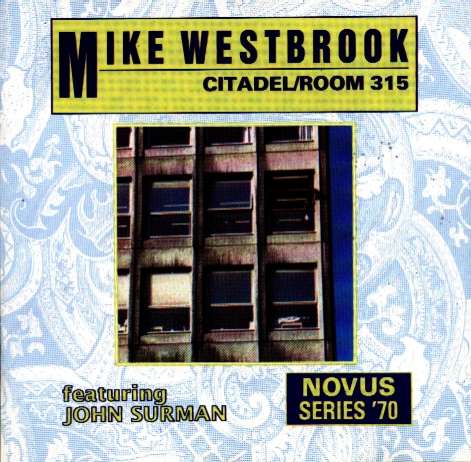Text from a 1974 concert programme:
Big bands have been a part of jazz ever since the 1920s, when Fletcher Henderson started using groups of saxophones and brass. Yet the individual soloist remained at the heart of the enterprise. Duke Ellingtons unique textures were dependent on the sounds of his remarkable sidemen. Count Basie's earliest band relied on a handful of superb soloists, as well as those exciting riffs and that surging rhythm section. And each band reflected the newest things that were going on in small group jazz, a process that got repeated during the 1940s and 1950s, when Woody Herman and Dizzy Gillespie - to name just two - led big bands that embodied the latest harmonic and rhythmic discoveries.
Something similar occurred in Britain when a new generation of musicians, emerged halfway through the 1960s. Most of them improvised within looser frameworks, using different conventions yet still possessing - the best ones anyway - the imaginative vitality that has always marked the, finest jazz players. The fresh sounds and ideas turned up in scores that were devised for large groups; in the eclectic shimmer of Mike Gibb's orchestrations, the rousing, kwela-tinged music of Chris McGregor's Brotherhood of Breath, - and the very human sound of Mike Westbrook's various ensembles. From the very start, Westbrook's band included one of the most brilliant of those new soloists, the baritone and soprano saxophonist John Surman, who had left Devon for London at the same time as Westbrook. And other early sidemen have continued to remain associated with Mike Westbrook right up to the present day - among them the trombonists Malcolm Griffiths and Paul Rutherford, trumpeter Henry Lowther and the drummer Alan Jackson.
Over the past decade, Mike Westbrook has led a variety of groups, but the present orchestra is the first really sizeable ensemble he has worked with for about ve years. This concert series also sees a shift in his composing style, a move towards more complex structures and textures. It's particularly evident in "Citadel/Roem 315", perhaps Westbrook's most substantial composition so far, its title juxtaposing the general and the particular, that blend of mystery and hard fact that Westbrook always relishes. "Citadel" (just like "Celebration" or "Release" or "Metropolis", all earlier Westbrook compositions,) conjures up a whole gallery of images, but the other half of the titte is purely personal, explained by the fact that it was in Roorn 315 at Leeds Polytechnic that Westbrook sat at a piano and got on with the job of composing. (A hard look at the front cover of this programme will reveal the face of the composer pressed to the window of Room 315 itself.)
"Love/Dream & Variations" features the trombone playing of Malcolm Griffiths. It derives from an earlier compositim, "Love Dream , a ballad performed by Solid Gold Cadillac (one of Westbrook's previous ensembles) as part of the background music for Adrian Mitchell's TV play, "Man Friday". That original melodic fragment became the basis for the various movements of this new work, movements that have been given selfdescriptive titles, except for the Interlude, where Westbrook springs a surprise by interpolating Duke Ellington's 1927 composition, "Creole Love Call"- But the concert begins with "Electric Fanfare" performed originally, under another title and using a different arrangernent, by Graham Collier's band at Southwark Cathedral in 1973.
In the end, nothing about jazz is so important as its human scale, the way it revolves around the identities of the musicians taking part. That concern for the particularity of the soloist lies at the heart of all jazz composition, from Jelly Roll Morton through Duke Ellington to Charles Mingus. And as well as continuing that tradition, Mike Westbrook has also inherited the pragmatism of those composers. "I think you find out by doing things", he once told an interviewer. It's a useful philosophy for any kind of artist, but in Mike Westbrook's case it also encapsulates one of his greatest virtues - a willingness to risk making a fool of himself occasionally in order to achieve something more than the safe or the circumscribed. Curiosity and sensitiveness are mixed - musically, at any rate - with a garnbler's instinct, an ideal recipe for any jazzman who wants to stay adventurous.
CHARLES FOX
